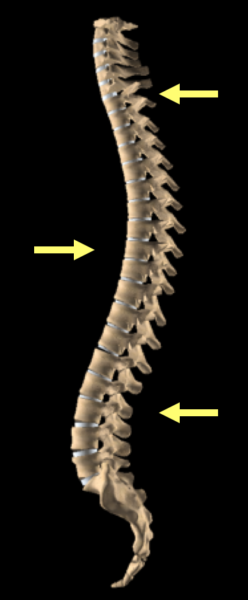Spinal Alignment and Balance – How This Could Change the Way You Live.
Adult Spinal Deformity (ADS) is becoming increasingly prevalent in aging populations. An abnormal alignment may occur in the coronal plane (scoliosis) or in the sagittal plane (kyphosis or lordosis). Aside from cosmetic considerations, ADS may also lead to significant back pain and disability.
There has been an abundance of research in recent years that investigate the relationship between spinal alignment and Health-Related Quality of Life (HRQOL). HRQOL is a measure of how a health problem impacts the quality of one’s life. HRQOL is calculated patient’s answers to questions about how a specific health problem affects them in various areas of their life. There are specific questionnaires for neck pain (Neck Pain Disability Index), headaches (Headache Disability Index) , back pain (Oswestry Disability Index) and spine deformities (SRS-22).
What we know for sure, is that both spinal alignment and balance can have a big impact on one’s quality of life.
Global Spinal Alignment
Global spinal alignment refers to the overall measure of the curves of the spine from the side (sagittal alignment) and how straight the spine and individual vertebrae are from the front (coronal alignment). Balance is the measure of how the lower cervical spine lines up with the pelvic and femur heads from the side and how the lower cervical and upper thoracic spine lineup with the sacrum from the front (coronal view).
In a normal spine from the sagittal view (side view), C7 (7th cervical vertebra) should line up directly over the sacrum. Specifically, a plum line from the center of C7 should line up over the superior, posterior portion of S1 (1st sacral vertebra). This measurement is now as Sagittal Vertical Alignment or SVA. When the C7 is anterior to S1 this is known as positive SVA or +SVA, when C7 is posterior to S1 it is -SVA.
+SVA greater than 40mm has been shown to increase the likelihood of low back pain and decreases HRQoL.
Spinal Curves
Another important measure is the individual curves of the spine. In a  normal, healthy spine there is a forward “C” curve called, lordosis in the cervical and lumbar spine, and a backward “C” curve in the thoracic spine.
normal, healthy spine there is a forward “C” curve called, lordosis in the cervical and lumbar spine, and a backward “C” curve in the thoracic spine.
Generally, the pelvis and lumbar curves determine the thoracic curve and the cervical curve. There are always exceptions to this. Everyone’s pelvis varies in size to some degree and the size of the pelvis will determine the normal lumbar curve for each individual. The larger the pelvis, the larger the lumbar curve.
How do we know what normal is for each person?
Although we certainly know what the curves and alignment for each person from the sagittal and coronal views (side and front) should look like, the size of the curve from the side can vary. The measure of the size of an individual’s pelvis is known as pelvic incidence (PI). Explaining how PI is measured is a bit more than either one of us likely wish to get into here, but what is important to know is that proper spinal analysis on radiographs is needed to determine what normal alignment is for each individual. Only then can a proper treatment program be designed to restore any misalignments back to normal.
Loss of Lumbar Lordosis
The lumbar lordosis needs to match the pelvic measurements. Lumbar kyphosis or reversal of the lumbar curve is a major predictor of low back pain and disability. Loss of normal lumbar lordosis can be the driving force of additional spinal alignments.
Thoracic Kyphosis
Both thoracic hyperkyphosis (too little curve) and thoracic hyperkyphosis (too much curve) can impact health. Thoracic hyperkyphosis increases the risk of compression fractures, cardiovascular and pulmonary conditions. Improvement in sagittal alignment in osteoporotic patient’s with fractures improves a patient’s quality of life. Thoracic hyperkyphosis also causes anterior head translation and is associated with neck pain, headaches, decreased cervical range of motion and difficulty breathing and decreased neck muscle strength and endurance. Hyperkyphosis decreased cervical lordosis and decreased cervical lordosis is associated with increased risk of neck pain.
Cervical Lordosis
Decreased cervical lordosis and cervical kyphosis (reversal of the cervical curve) can be driven by global sagittal misalignments. +SVA has been shown to decrease cervical lordosis and -SVA has been shown to cause anterior head translation and increase cervical lordosis in the upper cervical spine. A decrease in cervical lordosis and cervical kyphosis can cause neck pain, headaches, accelerate disc degeneration, and potentially cause neurological problems.
Health-Related Quality of Life (HRQoL)
Abnormal spinal alignment leads to pain, disability and negatively impacts the quality of one’s life. A proper spinal analysis is critical to understanding what is happening with each individual patient so a proper treatment plan can be designed to restore normal alignment.
At Square ONE we specialize in non-surgical spine correction; including the correction of individual curves and overall spinal balance. Correcting the spinal curves and spinal balance can lead to long-term results and improved quality of life instead of just temporary relief.
To see if Square ONE can help you call 970-207-4463 to schedule a free consultation.
